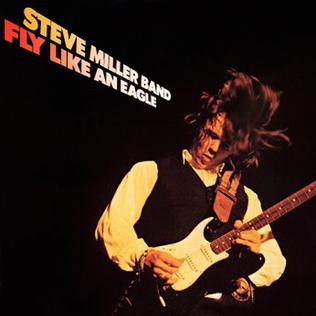Category: Round 10
KETIL BJØRNSTAD – Seafarer’s Song (2004)
Review by: Dinar Khayrutdinov
Album assigned by: Roland Bruynesteyn
THE AEROVONS – Resurrection (1969, recorded in 2003)
Review by: Avery Campbell
Album assigned by: Charly Saenz
ROY WOOD – Boulders (1973)
Review by: Andreas Georgi
Album assigned by: Ali Ghoneim
STEVE MILLER BAND – Fly Like An Eagle (1976)
Review by: Francelino Prazeres de Azevedo Filho
Album assigned by: B.B. Fultz
Take “Mercury Blues”, for example: it manages to update an old blues song structure to the 70s quite nicely, but lacks any grit whatsoever. The two blues tracks in the end aren’t bad, but they seem like an afterthought, filler if there ever was any. “Rock’n Me” is actually embarrassing. It tries to emulate the blood-pumping guitar style of Townshend and Hendrix, but it’s so mild, it’s like one of those “parkour fail” videos on the internet, where the person tries to jump from a rooftop onto another and falls in the middle. This is made worse when you consider Steve Miller was godfathered by no one other than Les Paul himself, and was supposed to be a great guitarist. Well, if he was, he certainly didn’t show it here. The guitars were unimpressive throughout the album.
That’s not to say there aren’t good songs here. The title track is very funky, with a catchy chorus. “Dance, Dance, Dance” is a country song that has the kind of energy this album could’ve used more of. The Sam Cooke cover “You Send Me” is the strongest point; it couldn’t have been otherwise given the differences in the songwriting capabilities of the two of them. It is sung in a way that makes it clear that the singer loves the song, and that makes it even more endearing to me. The best Steve-Miller-penned track here is “Take the Money and Run”, a piece of power-pop in the best Badfinger style and backing vocals stolen from “Sympathy for the Devil”. Fly Like an Eagle is much better when it does full pop than when it goes halfway blues.
In the context of all those great 70s albums, even when you just consider pop-rock ones, it won’t stand out too much. It should never appear on a best-of-the-decade list. But that is more of a testament to the amount of good stuff that appeared in that time, not that Fly Like an Eagle is bad or weak. I’m glad I’ve came across this album, a very pleasant listen.
DANIELLE DAX – Pop-Eyes (1983)
Review by: Syd Spence
Album assigned by: Tom Hadrian Kovalevsky
JETHRO TULL – Aqualung (1971)
Review by: Irfan Hidayatullah
Album assigned by: Victor Guimarães
CAN – Tago Mago (1971)
Review by: Michael Strait
Album assigned by: Francelino de Azevedo
ONDATRÓPICA – Ondatrópica (2012)
Review by: A.A
Album assigned by: Nicolás Martínez







:format(jpeg):mode_rgb():quality(40)/discogs-images/R-945206-1399924880-8793.jpeg.jpg)



